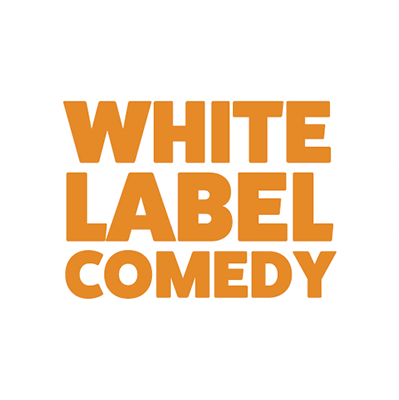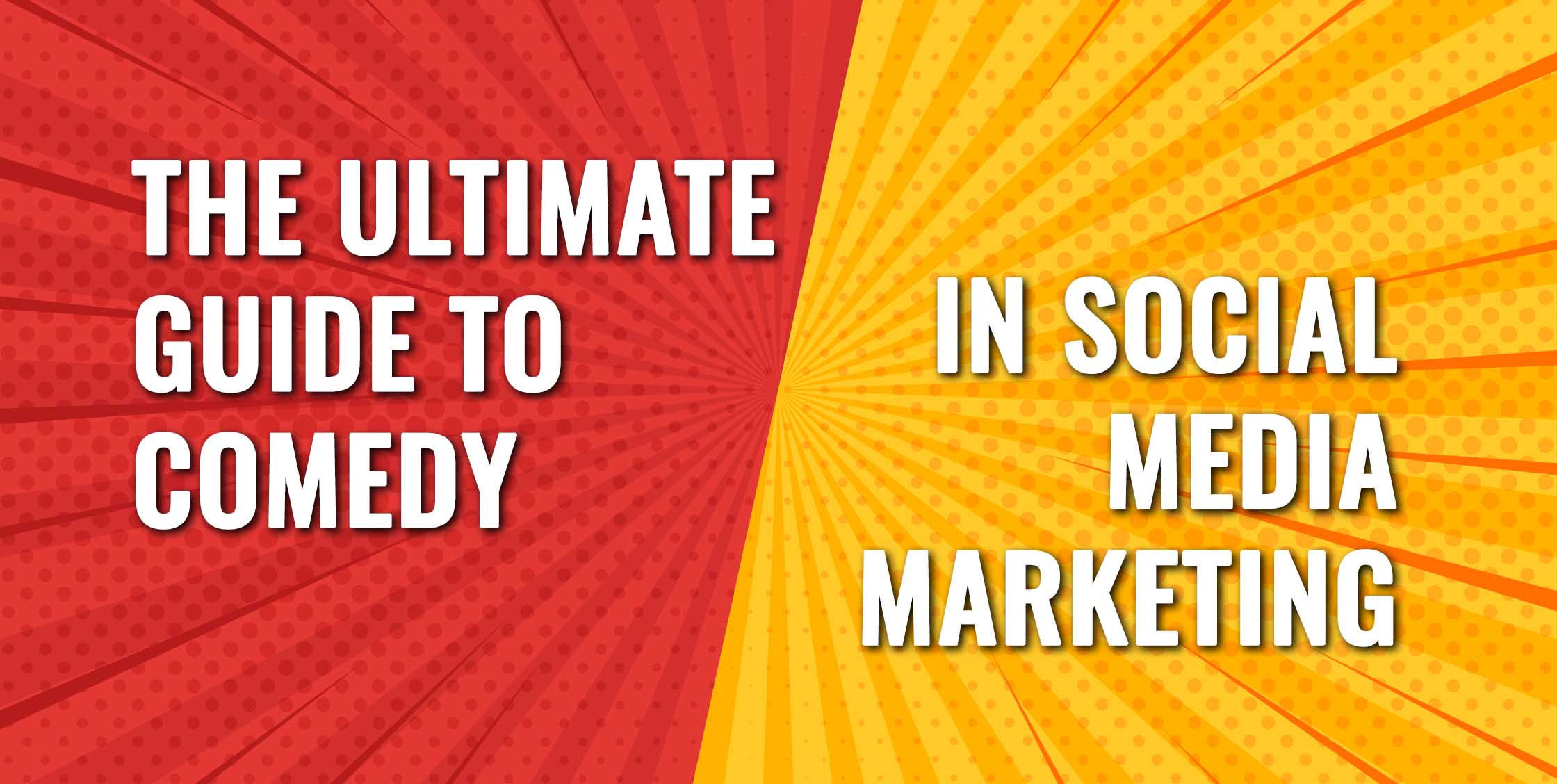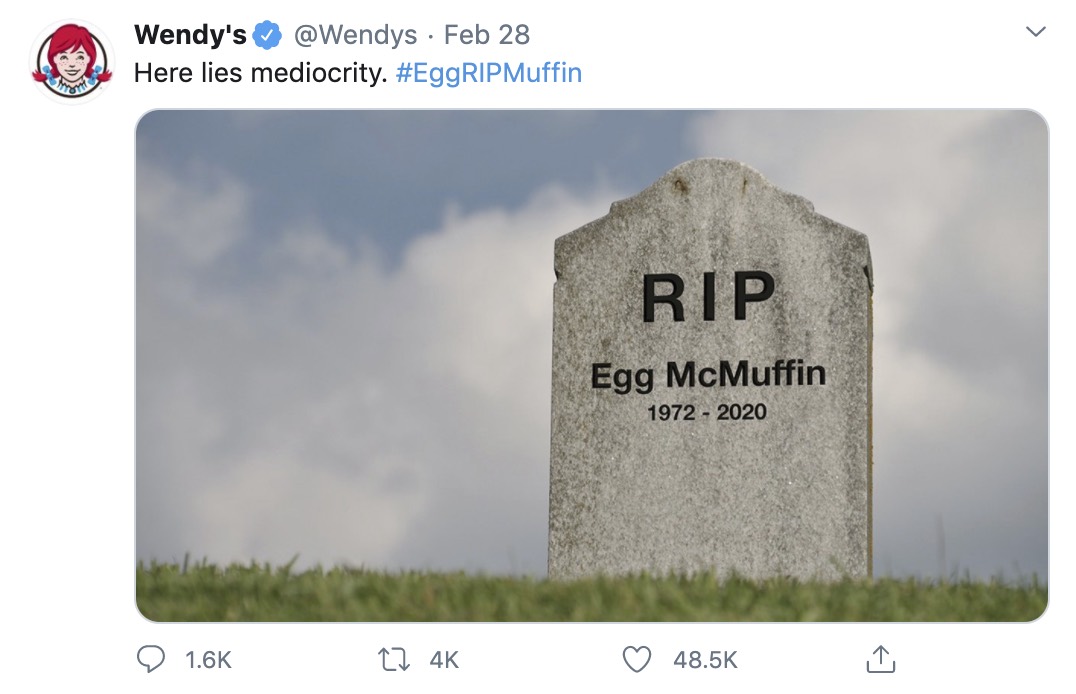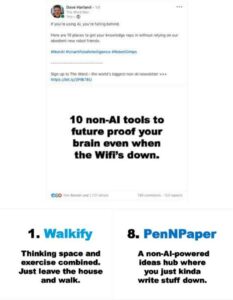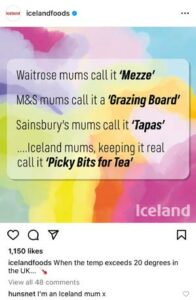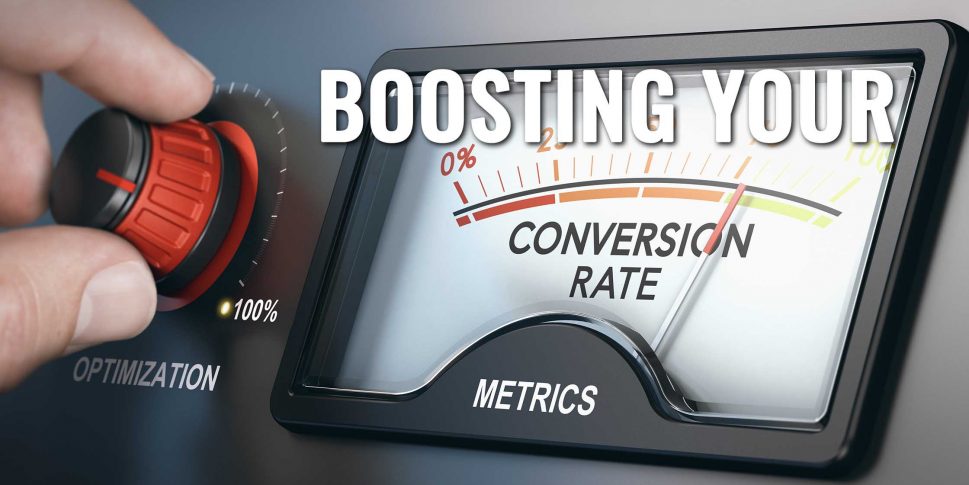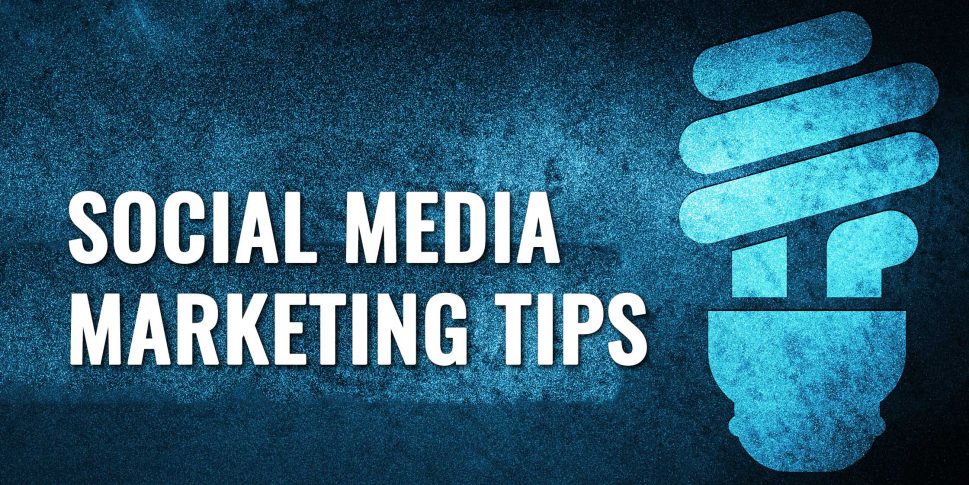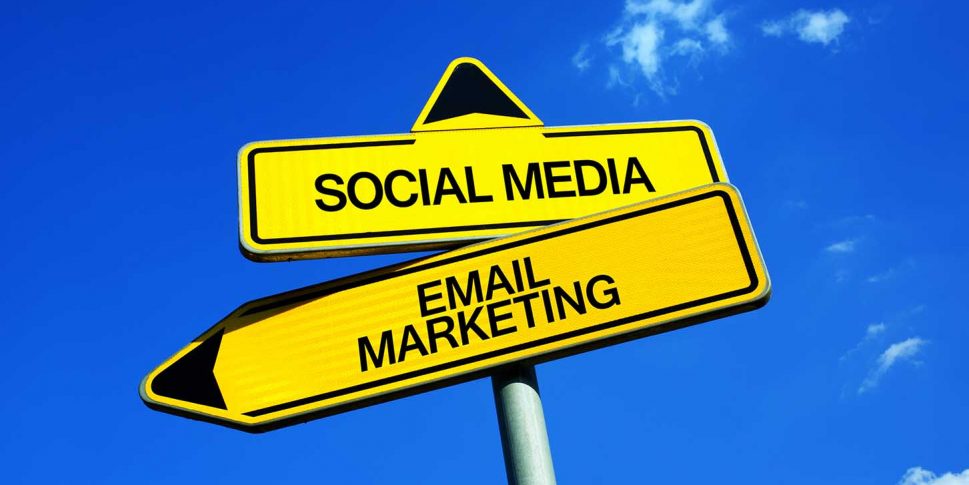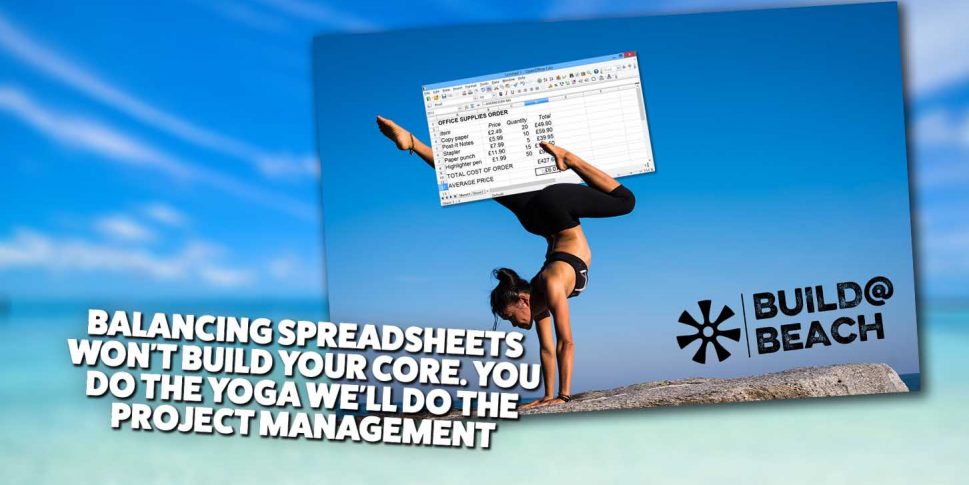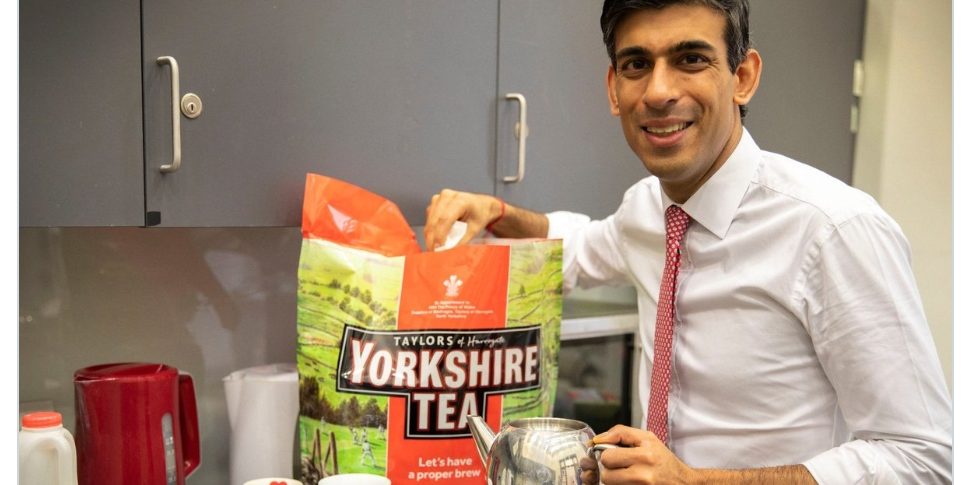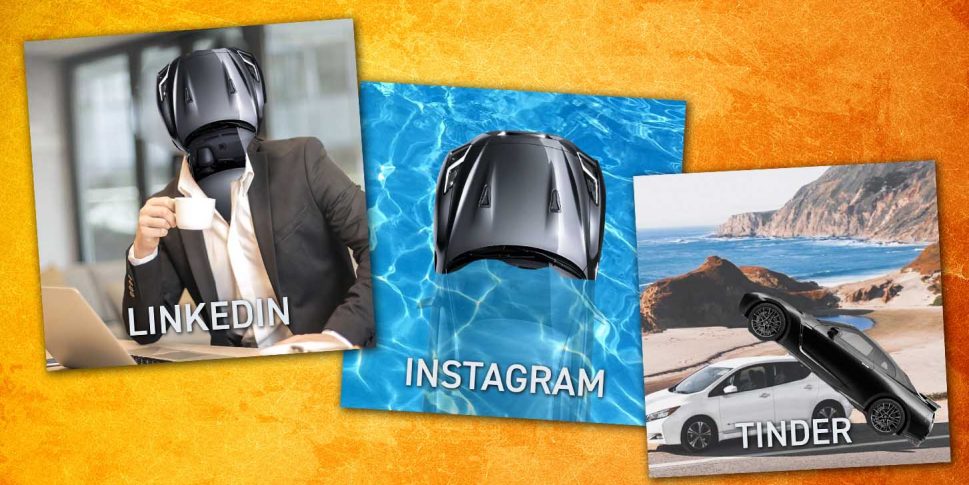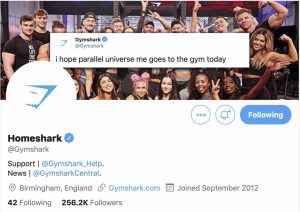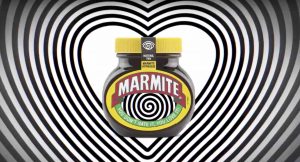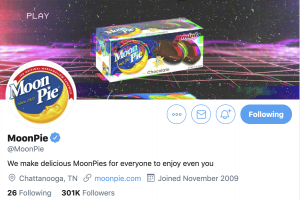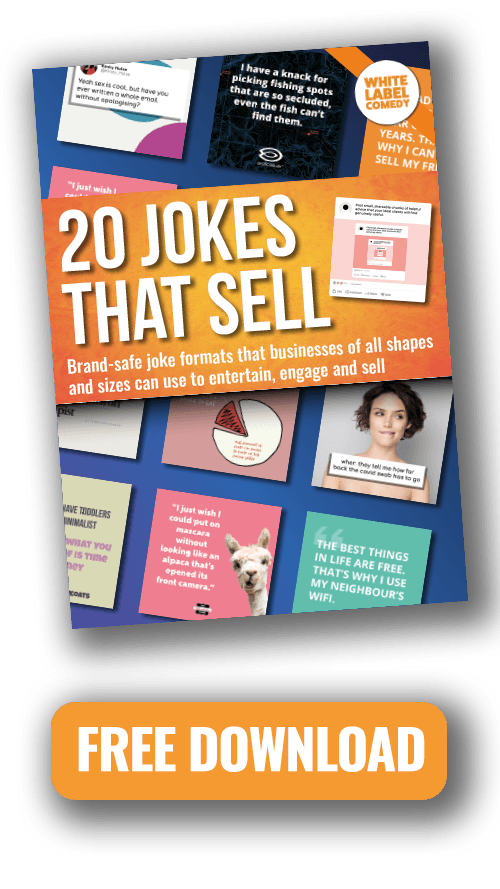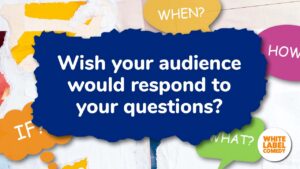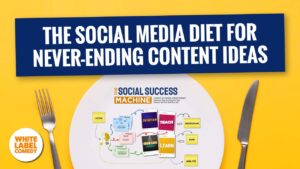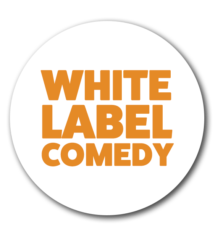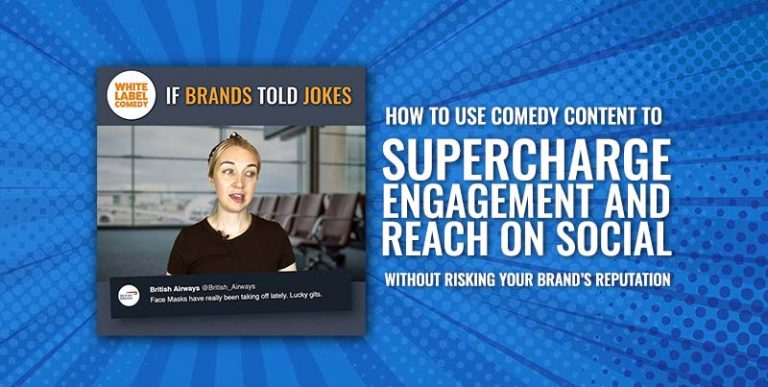Hold onto your hats, folks! This long read contains:
Everything you need to know about comedy and social media marketing.
First off, we’ll get you up to speed on the basics. Then we’ll dive into why comedy content is the secret to increasing your following, getting massive engagement, boosting your brand awareness and generating sales — laying out some best practices for being funny on social, and pointing you towards plenty of fine examples along the way.
Let’s kick off with the first thing that any social media marketer needs to do (but so many make the mistake of not doing)…
Identify Your Strategy
If your approach to social media is to post infrequently at the best of times, if at all, then you probably already know that your social platforms are falling far short of their potential to boost brand awareness and generate sales.
Worse, you may regularly spend time and money posting content and paying for it to be promoted, only to be disappointed when it doesn’t get the engagement and conversions you were hoping for. You may as well have chucked that money off a big ol’ cliff (at least that would’ve been fun).
If either scenario sounds familiar, chances are you haven’t taken the necessary steps to identify an effective social media marketing strategy.
We’ve identified five steps that are guaranteed to help you pin down that strategy. The best part is, it’s nowhere near as hard or time-consuming as you think. Here’s what you need to do:
1. Identify where you are now
First things first, you need to take the lay of the land. Without assessing what you’re already doing, and the ways it is or isn’t working, you won’t be able to tell whether your new plan is any better. Take a long hard look at these key areas, and make notes:
- Which social media platforms are you on?
- How frequently do you post? Is it scheduled or ad hoc?
- Who is your current audience?
- How does your current audience engage with your posts, if at all?
2. Identify your ideal customers
Forget your current customers for a second. Who are the customers you WISH were buying your products and services? These are the people that your new and improved social media campaigns and content marketing need to resonate with.
Research your ideal target audience and really try to get inside their heads. Think about their pain points and how your brand offers a solution, but don’t stop there.
What does this type of person do to unwind? What TV shows do they watch? What would they call their dog? Or maybe they’re the kind of person who owns a large hairy spider instead — if so, what would they call it?
By extension, what kind of social media users are they? Are they on Facebook, Twitter, Instagram, TikTok, Tinder, Pinterest — or all of the above?
Last but not least, consider what type of comedy makes them laugh out loud. Is it Dad’s Army or a dark AF Martin McDonagh play? Fail vids or Bill Bailey concerts? Do they know what ‘AF’ stands for?
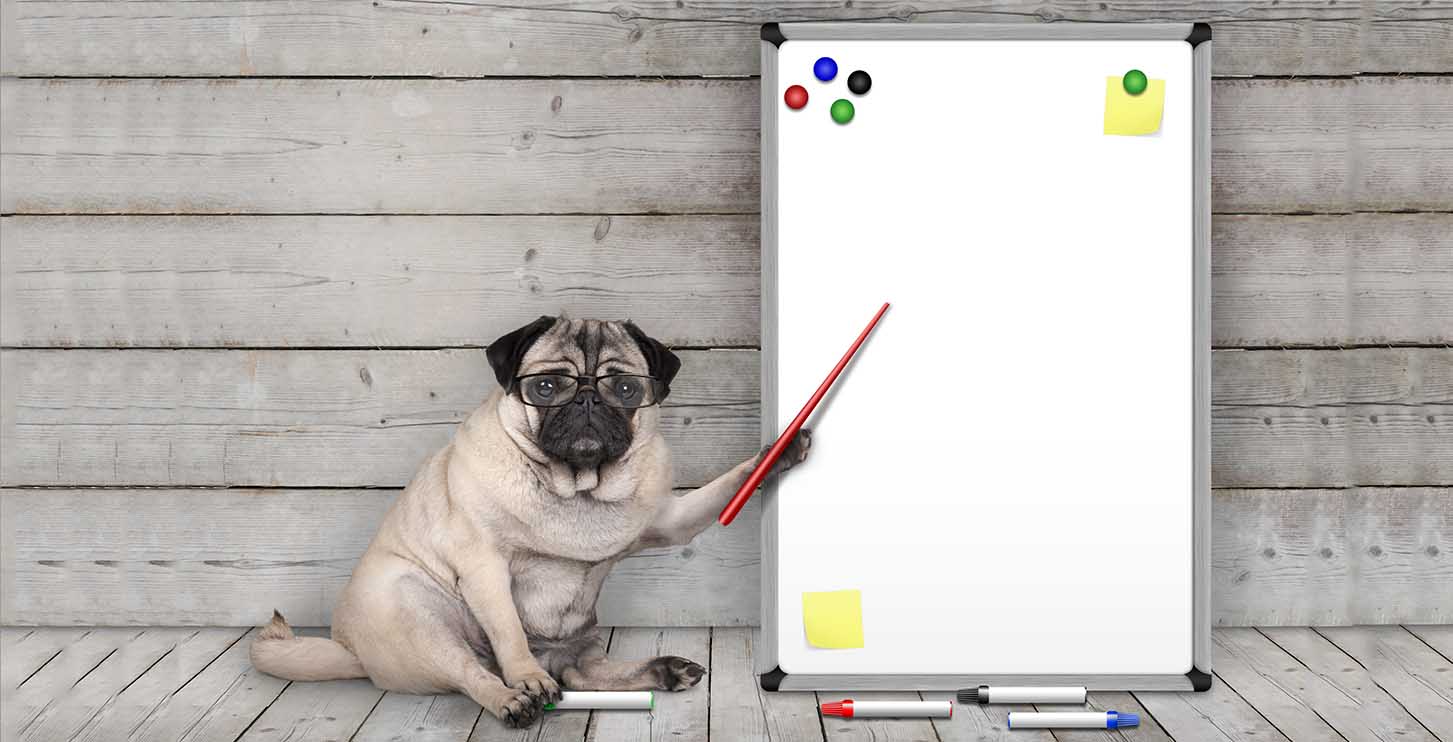
3. Work out what success looks like
It’s crucial to identify what your aims are. This is how you’ll work out how best to pursue them, and how you’ll evaluate the success of your new approach.
What are your KPIs (key performance indicators)? Yes, of course you want to increase brand awareness, generate more leads, make more sales and basically be the biggest brand on social media by the end of the week — don’t we all? You probably want to get lean and learn a new language, too.
But it’s important to prioritise your goals, and make sure they’re SMART. Once you’ve got a firm grasp on what you’re aiming for, it’s crucial to keep that in mind throughout the process.
4. Start creating content
If you’ve been diligent with the previous steps of this plan, you’ll have a good handle on what you want your social media content to achieve, and roughly what kind of content your ideal customers may want to engage with.
But let’s take a step back and look at two general rules for successful social media content creation. Regardless of your specific goals, every brand’s social media content needs to communicate and entertain.
Whether it’s a single tweet, a cross-channel video campaign, or a SEO-optimised blog post series, every type of content needs to communicate a message. It needs to tell your audience about your brand, or a specific product; perhaps it persuades them to sign up to your email newsletter or drives traffic to your e-commerce page.
Secondly, your social media content needs to entertain. Social media users are savvy. They’re wary of being advertised to, and their guard goes up as soon as they sense it happening. They’ll ignore or even actively avoid content that seems to exist solely to sell something — after all, social media is a constant barrage of shiny distractions, so it’s not as if they need to waste time engaging with content that doesn’t offer any enjoyment.
The solution is something that TV advertising creatives have known for decades: SEX

Nah. Truth is, you’ve got to make them laugh. Comedy is a tried-and-tested way of combining a brand message with entertainment. It makes social media users want to engage, absorb and share your brand communications.
We’ll talk more about the benefits of comedy and the best ways to generate funny branded content shortly, but for now, let’s pretend you’ve got some and you’ve started posting it. It’s time to…
5. Identify what’s working (and do more of it)
Once you’ve started posting your new-and-improved content, use an analytics tool to monitor performance across all your social media channels on a weekly basis. Data fetishists, this is your time to shine.
This is where the metrics you identified in step three really come in handy — by evaluating success in terms of your specific desired outcomes, you can quickly identify your highest-performing and lowest-performing posts. What did the most effective posts have in common? Take note of any commonalities you can identify, because that’s what you need to double-down on.
It may surprise you to notice that small adjustments can make a surprisingly large impact — don’t be afraid to experiment and keep an eye out for spikes (or dips) in engagement. For instance, you might find that posting in the morning leads to more ‘likes’ than posting in the evening, or that posts with images rather than videos get more click-throughs.
Crucially, you’ll start to learn what specific type of comedy content entertains and inspires your audience. You can do this through repeated trial and improvement in the long term, or get the answers quicker by running an A/B test with our BSOH (Brand Sense of Humour) A/B testing protocol.
This method takes advantage of the A/B testing options on offer within Facebook advertising, to help you optimise your paid promotions. You’ll also learn what works so you can apply it to improving the organic performance of your un-promoted content too.
You may want to dig a little deeper into our five step method to develop your social media marketing strategy, or read on to find out…
Why Comedy Content Works (for businesses of all sizes)
Admit it — we all hate being sold to, don’t we? You can see a sales pitch from a mile away, and so can your social media followers (and so can the people you wish were your followers).
Every social media marketer knows this, but they still end up pumping out pushy, dull sales messages that receive little-to-no attention on Instagram, Facebook, Twitter or any other social network – because they don’t know what else to do. By contrast, the brands that are absolutely killing it on social media know how to say what they need to say (the sales pitch) in a way that makes people listen (the entertainment factor).
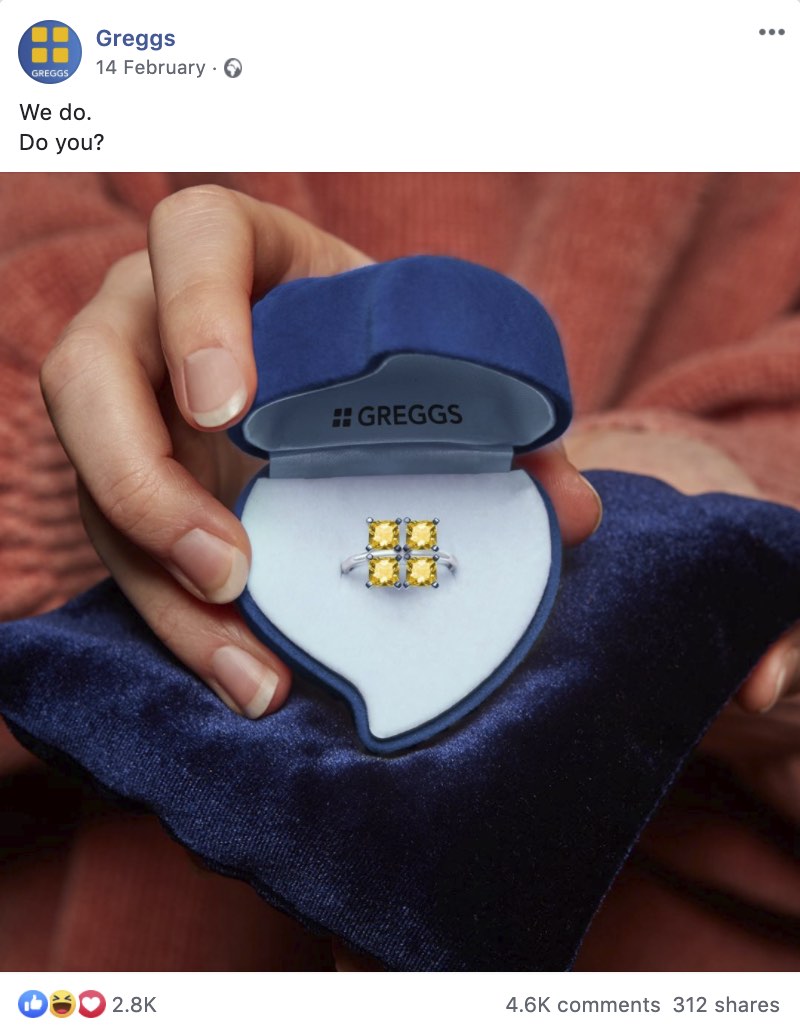
Comedy makes sales, without making your audience feel like they’re being sold to. A big reason for this is that comedy is disarming. When something makes us laugh, we’re temporarily caught off-guard — and when our defences are lowered, we’re susceptible to absorbing whatever message is being presented to us.
Even better, when something is really funny, it lodges itself in our memory. Take a second to think about all the funny quotes from television, movies and adverts that you find yourself referencing in daily life. Some of them may be decades old!
If you can get your funny content stuck in a social media user’s head, your brand name, image and message will stay in there too. This is the core logic behind using comedy in content marketing. But there’s a whole stack of other advantages, and you don’t have to be an established global brand with a massive in-house marketing department and a billion people on your mailing list to reap the rewards.
Brands of all shapes and sizes can benefit. In fact, comedy is one of the best tools that small businesses can leverage to punch above their weight on social media. Here’s why…
Funny content gets an enormous organic reach
Most small businesses can’t justify spending a lot of money on Facebook’s paid-for post promotion or other social ads. They need their posts to reach new audiences organically, which only happens when lots of their existing followers engage by liking, commenting on, or sharing their posts.
As we’ve discussed, people don’t engage with content that bores them. They just don’t. It’s equally true that we all love to share things that make us laugh — this is why the internet is awash with examples of brands whose funny tweets go viral, without them spending a cent.
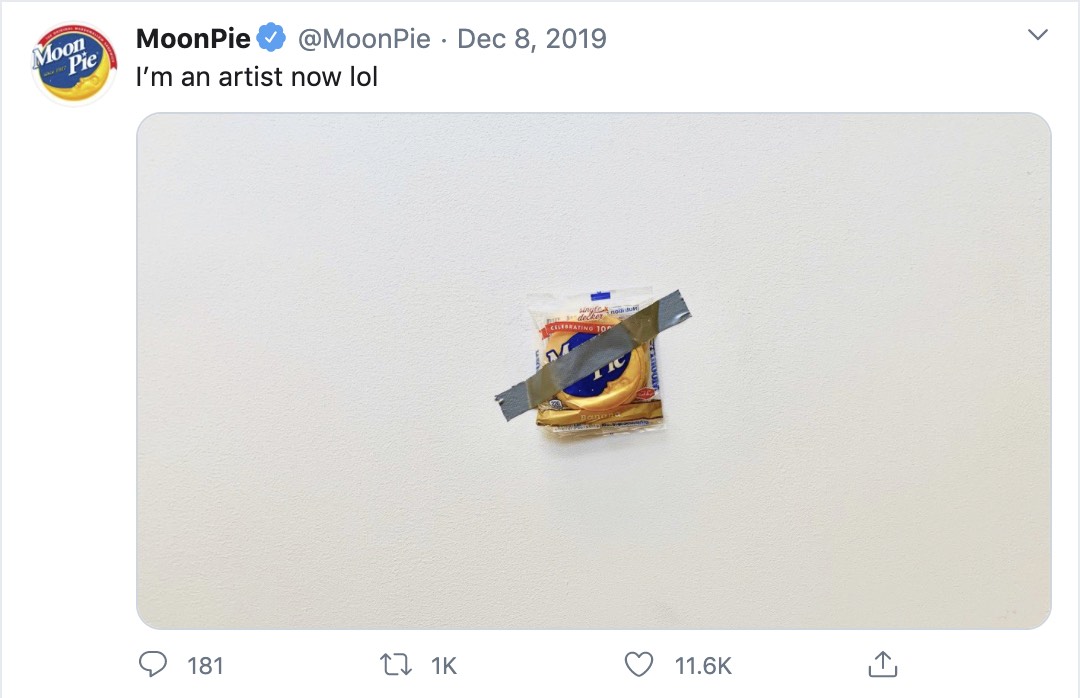
Brands like Innocent and MoonPie know that ‘funny’ equals ‘shareable’, and by regularly posting content that their audience can’t help but share, they’re getting their brand message onto thousands of new screens without sinking their budget into paid advertising.
Of course, this approach can be combined with Facebook ads for an even bigger impact, but small businesses can see great results simply from letting the comedy carry their message far and wide.
Comedy keeps your brand on users’ screens — without annoying them
It’s important to ensure that your branded content is constantly popping up in your audience’s feeds, especially when you’re a small business desperately trying to build brand awareness. This is the logic behind regular posting.
However, we also know that posting repetitive, sales-heavy content is a surefire way to annoy followers to the point of unfollowing you. This might be why just 52% of small businesses post daily — their social media managers know that spammy posts do more harm than good, but they don’t know what else to post.
By allowing yourself the freedom to post content that’s light-hearted, tongue-in-cheek or just plain funny, you open up new avenues of content creation that helps keep your daily output feeling fresh — and stops your audience hitting the ‘unfollow’ button.
Comedy holds the key to compelling visuals
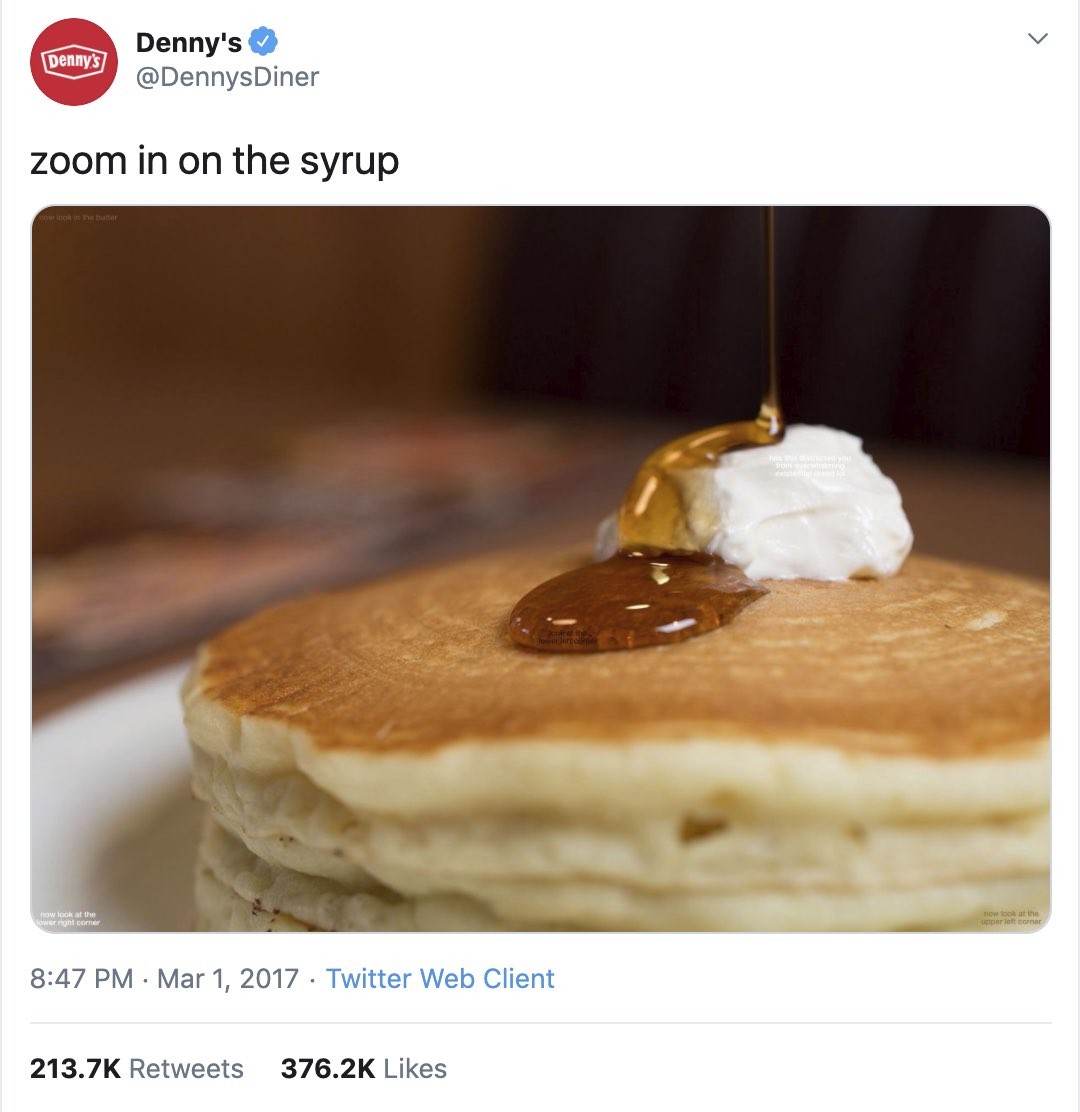
Twitter’s official guidance to brands is clear: “The single simplest thing you can do to get more attention to your Tweets is to add an image or GIF.”
As a small business trying to get noticed on social media, you’re competing with a constant stream of content designed to hijack your audience’s attention. Babies, kittens and hardworking NHS staff crying because their neighbours bought them flowers — they’re all out to ruin your digital marketing efforts.
Posts without a compelling visual component (whether that’s a photo, a video, or yes, even a GIF) are instantly lost in a sea of digital shiny things.
It can be really tough to find visual content to post, especially for brands that don’t lend themselves to being photographed in quite the same way as a fashion brand does, for example. But as soon as a small business decides to embrace comedy in their social media marketing, the floodgates of opportunity are opened to all kinds of visually arresting content — from funny photoshopped images to cartoons, video sketches to behind-the-scenes outtakes and, yes, even pop culture GIFs.
Make them laugh, and they’ll make your content for you
When you post funny content, your followers won’t be able to resist chiming in with their own variations on the joke — either via comments or retweets. Most won’t be funny at all — Dave from Lowestoft really isn’t the undiscovered stand up star he thinks he is — but that’s not the point. The point is that your audience is generating content for you, spreading your brand message far and wide while you sit back and watch the likes roll in.
Small businesses should experiment with actively encouraging this kind of interaction, rather than waiting for it to happen organically. Run a caption competition, promising a small prize for the funniest idea, or invite them to share funny stories in the comments section of a topical post. Talking of ‘topical comedy’…
Comedy can be evergreen, trending, or topical
Small business owners are often time-pressed multi-taskers for whom social media management is just another item on a long list. Therefore the ability to schedule social media in batches, lining up posts for the days, weeks or months ahead, is crucial.
This is where ‘evergreen’ comedy content is your friend. This is any type of funny post that relates to a brand message, campaign or product that isn’t going away any time soon — meaning it makes as much sense going out today as it would tomorrow, or next week. These posts will happily make up the bulk of a small business’s scheduled output.
Once you’ve got a solid framework of scheduled posts in place, you can post extra content as and when you have time. This kind of reactive posting is the only way you’ll be able to jump on board trending topics or memes.
WARNING: If you’re trying to capitalise on an existing funny hashtag, acquaint yourself with the idea behind the trend and don’t half-arse it! Yorkshire Tea nailed the #DollyPartonChallenge. Sadly, Nissan didn’t (although we fixed it for them):
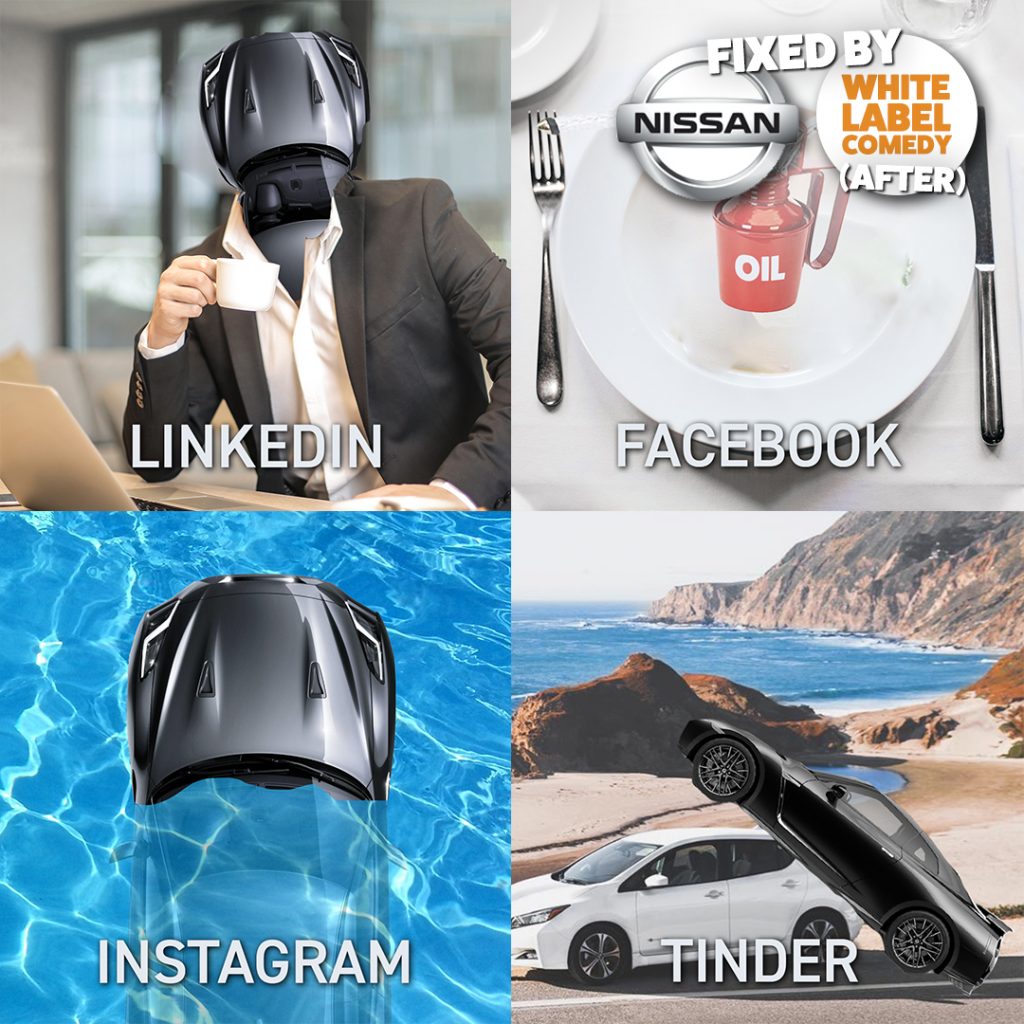
You can even try your hand at topical comedy. As anyone who’s a fan of satire shows like Have I Got News For You, Breaking the News and Mash Report will know, the joke that gets the biggest laugh is often the one that relates to the news item or element of pop culture that everyone’s talking about on a given day.
Topical comedy is hard to pull off, and even harder to pull off in a way that paints your brand as the hero — but the potential rewards are enormous. When Tyrrells’ social media team dared to make a topical joke and throw some shade at their competitors in the very same tweet, this happened:
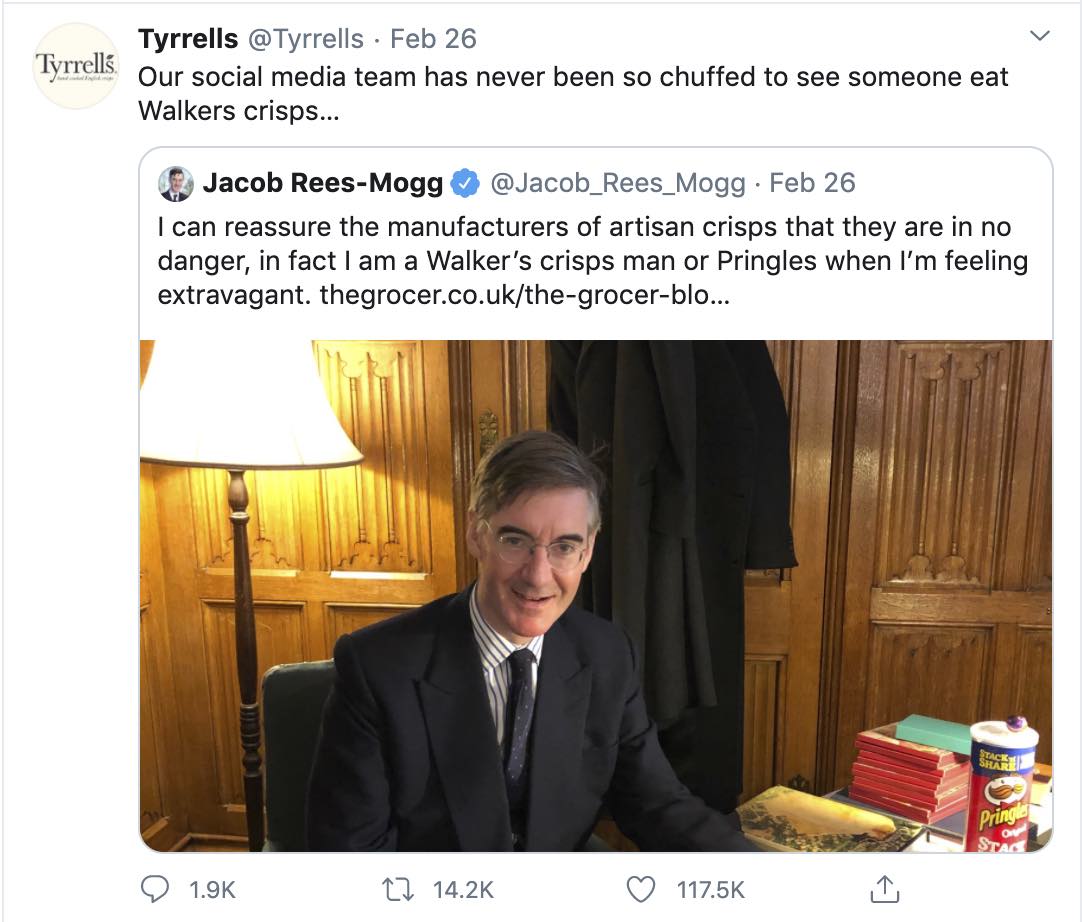
Funny content builds relationships
Businesses of all sizes want to build loyal relationships with their target audience. By interacting with social media users in a funny and playful way that fits your brand voice, you not only strengthen your brand’s distinctive public image — you demonstrate that your social media accounts are run by humans. People build relationships with people, so your aim is to make your ideal customers feel like they’re interacting with a person, not just a profile.
Talking of relationships, we’re about to explore the world of social media customer service. You really ought to read it, but you may also want to go and learn more about the specific benefits of comedy content for small businesses. Come back after — we’ll be here, listening to the hold music.
Should Social Media Customer Service Responses be Funny Too?
For 1 in 3 people with customer service issues, social media is their first port of call. Whether you like it or not, your business MUST be prepared to field queries and complaints through your social media.
Now, we know your social media marketing strategy already includes the word ‘comedy’ in big, bold type (preferably right at the top). Great job! But should you extend this philosophy of funny to the way you handle customer service queries?

The short answer is ‘yes’. Here are the four top reasons to make your customer service as funny as it is helpful:
1. To show there’s a person behind the profile
You’ll recognise this one from about two minutes ago. Humanising your social media presence through comedy is an effective way to build relationships and cultivate brand loyalty, but it will also pay dividends when it comes to customer service.
A customer with a query or complaint doesn’t want to be met by an auto-responding bot, or an employee hitting copy-and-paste on bland, one-size-fits-all responses.
They want to speak with a person. They want to feel like their issue is being dealt with empathetically. By training the team members behind the account to use light-touch humour when addressing customer service issues, you make it abundantly clear to social media users that their needs are being catered to on an individual basis, by real people.
2. So you can respond to LITERALLY everyone
Social media is ‘always on’, and customers have increasingly demanding expectations of how quickly and consistently brands will respond to queries or complaints.
While comedy might not help you respond at ninja-speed (we’d recommend eight years of sunrise training at a mountaintop dojo), it will help you demonstrate to social media users that you consistently respond to each and every direct question — even those that don’t deserve a serious answer:
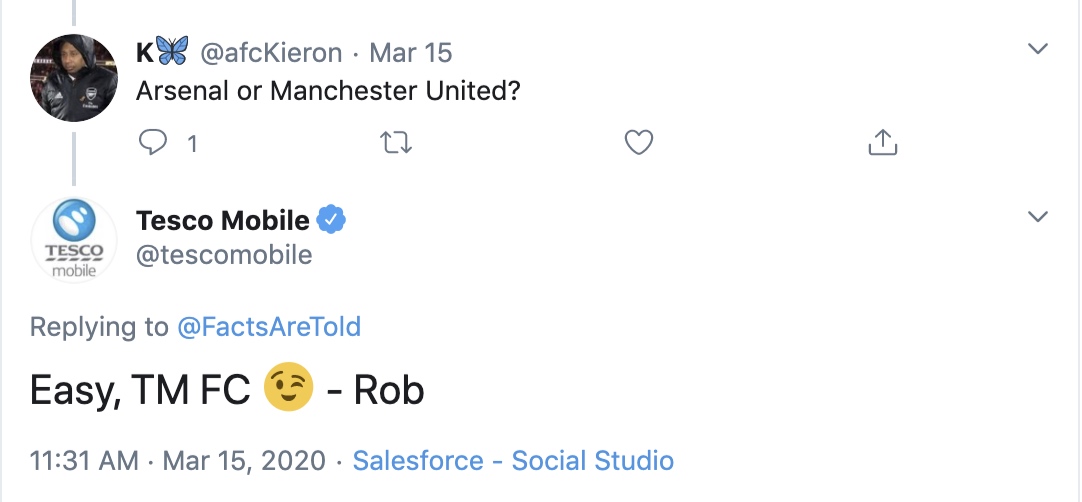
Many social media marketing strategies would have you ignore brand mentions or public comments that are jokes, rhetorical questions or plain old spam. But by responding to these non-urgent messages with humour, you’re reinforcing your playful tone of voice, getting your brand’s social media handle to appear on more screens, and assuring other users that you’re ready to engage promptly when they have a genuine issue. Just make sure you respond to the real enquiries as well!
3. To profit from your haters
Someone is trolling your page. It’s every social media manager’s nightmare. You can’t ignore them and let them spread negativity unchecked, but deleting comments (where that’s even possible) raises a red flag to other users.
Instead, the best brands on social media engage with haters — they use comedy to turn it around. If you can find a funny way to use a reply, retweet, comment or screenshot to set the record straight, you’re turning negativity into entertainment for your followers. And as we know, entertained followers become paying customers.
Your willingness to respond at all demonstrates you don’t take yourself too seriously, which can often be enough to turn the situation around. You may even find that your top followers start to fight off the trolls on your behalf, further strengthening their brand loyalty!
True, it takes skill and guts to pull off, and you should err on the side of being too gentle or lighthearted in your ‘comebacks’ — we love James Blunt’s approach, but unfortunately most brands won’t get away with this:
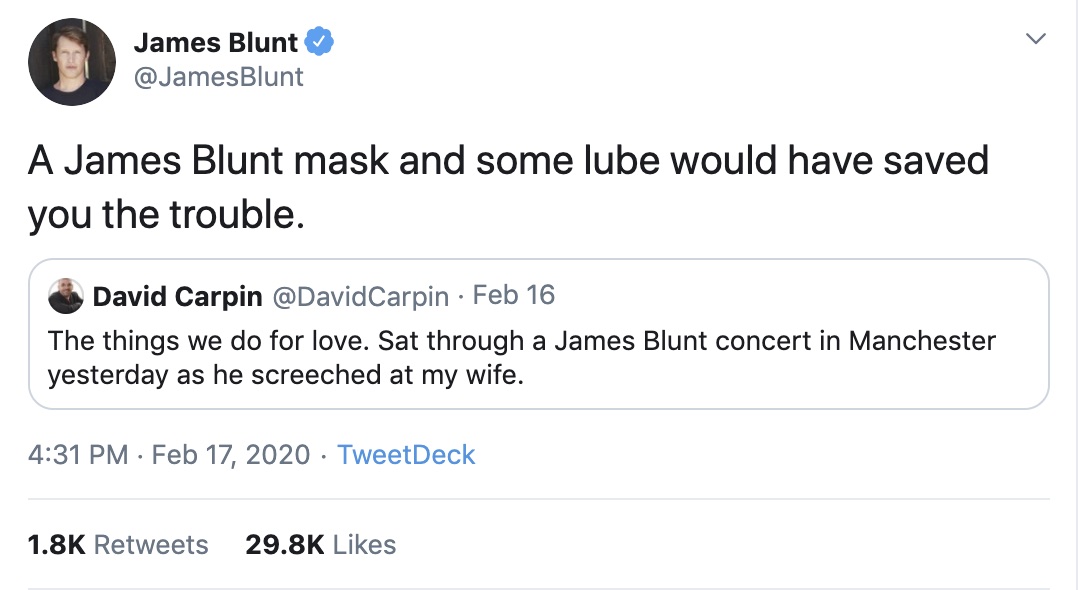
4. Cool that conflict down
Making a joke can get you out of trouble — it’s legit science. When someone in a conflict situation is caught off-guard with humour, they’re likely to switch from a stubborn mindset to a more flexible and considerate one.
This is why a dash of light-touch comedy before an exchange gets too heated can help you persuade an angry customer to take the conversation out of the public eye. Your aim is to swiftly move the conversation into your emails or DMs, where it won’t wreak havoc on your reputation for the entire internet to see.
Self-deprecating humour is likely your best bet here, and keep it gentle. You don’t want the angry customer to feel like the butt of the joke, and above all, the humour mustn’t be at the expense of getting their issue addressed quickly and effectively. Now is not the time for ‘your momma’s so…’ jokes (that time is, in fact, never).
There’s more to read about using comedy in your social media customer service, but you should probably stick with us to see what happens when a funny brand is faced with a social media marketing crisis…
Social Media Crisis Management — Yorkshire Tea vs the Tories
In February 2020, Yorkshire Tea had what they described as a ‘rough weekend’ on Twitter. Luckily they’ve been using comedy in their social media marketing for years to great effect. This is how they not only survived a potential disaster, but came out smiling.
It all started when Chancellor of the Exchequer Rishi Sunak posted this photo on Twitter, presumably in a bid to show he’s a ‘man of the people’, or something. It went down about as well as you’d expect.
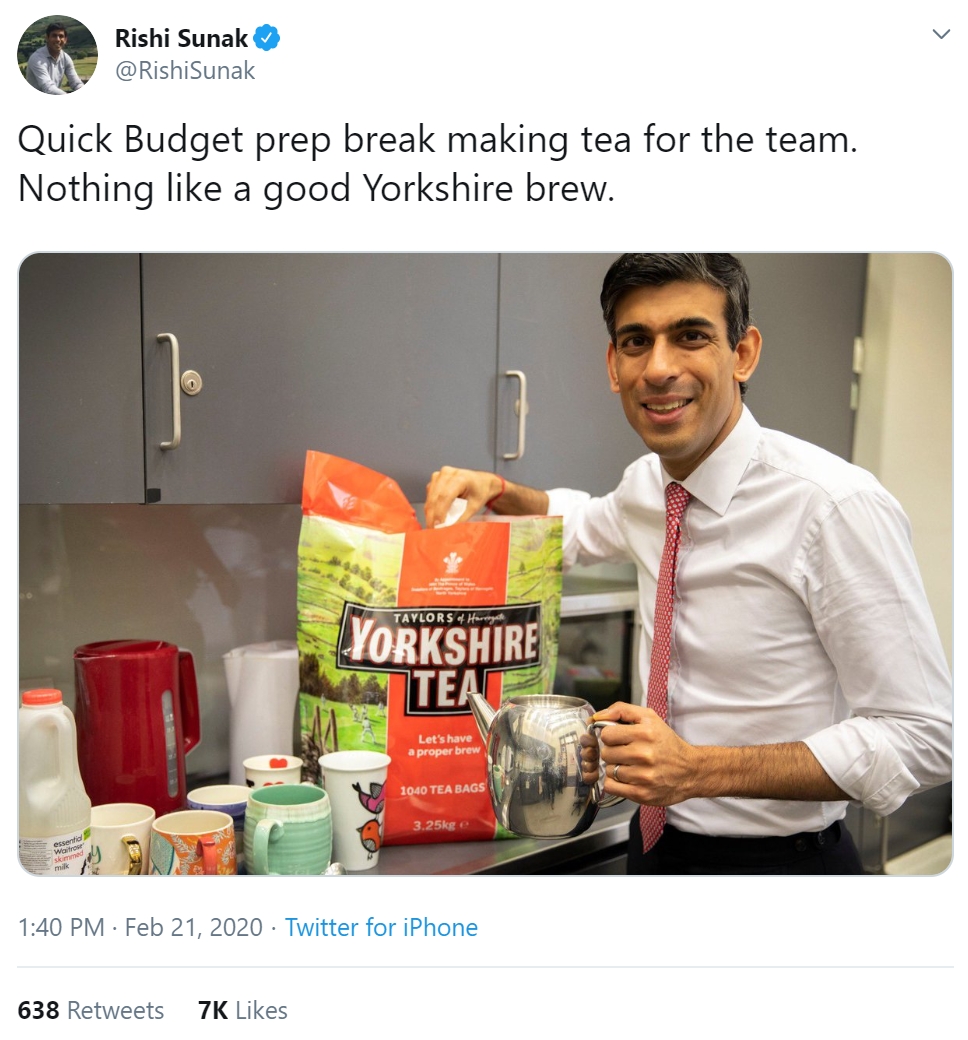
The backlash was instant but surprisingly, the majority of it wasn’t aimed at the politician. Instead, Yorkshire Tea found themselves bombarded with threats of boycott and even bizarre accusations that they’d struck some kind of endorsement deal with Sunak. Ah, the classic ‘use a Tory politician as a social media influencer’ trick. Works every time.
The brand’s initial response followed our golden rules of social media marketing customer service. It conveyed the important information, but softened and humanised it with the addition of a light-touch joke that fits their long-established tone of voice perfectly:
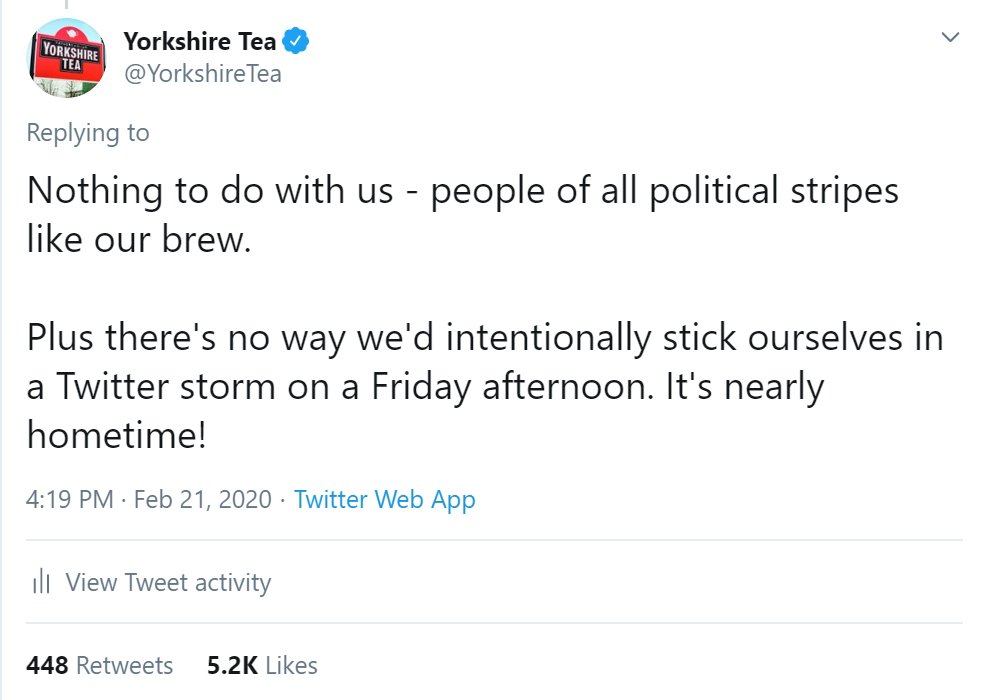
Despite this valiant initial effort, the negative comments continued to roll in over the weekend. On the following Monday, the brand tweeted a thread that summarised the situation, complete with screenshots, and urged social media users to ‘be kind’. The final tweet in this thread received 62.1K likes. They not only clarified the situation and responded to their haters — they also received massive brand amplification in the process.
This is a social media marketing team that knows when to use comedy and just how much to use. In this instance, they correctly identified the precise point at which it would be better to put on a serious face. They struck the balance between silliness and sincerity, and managed to turn a potential crisis into positive PR.
We’re happy to report that normal service has resumed, and they’ve been pumping out funny content in the weeks since! Here are a few of our favourite recent examples:
1. Two solid text-only tweets here — which just goes to show, if you can make an amusing, topical observation that will resonate with your customer base, they’ll lap it up. Or maybe it’s just because everyone’s on Twitter during the pandemic. Either way, nice work YT!

2. Oh, look! It’s some of that user-generated content we were talking about. The YT team has done a great job of re-captioning fan photos to provide some on-brand levity during the Coronavirus crisis.

3. This thread is slightly more ‘high concept’, which may be why it hasn’t performed quite as well as their other comedy content — but we love the originality and layered humour. Extra points for knowing your audience and satirising a television show they’ll likely know plenty about!

You can learn damage control from the pros by checking out our more comprehensive case study of Yorkshire Tea’s Rough Weekend — we’ll also treat you to some classic examples of their hilarious social media content.
We’ve talked a lot about why you should post comedy content to your social media platforms. It’s time to take a look at the different ways you can actually execute this.
10 Types of Funny Social Media Content
Comedy content is the key to getting your brand message onto your ideal customers’ feeds, and persuading them to actually absorb it. It boosts brand awareness, and generates sales. But what form will your comedy content take? Here are ten ideas to get you started.
1. Tweets
The smallest unit of social media content is a great place to start experimenting with comedy on your feeds. Remember: text-only tweets can fly if they’re properly funny, but you’re better off including an image or video. Pick up some top tips for writing your first branded joke with our free email course.
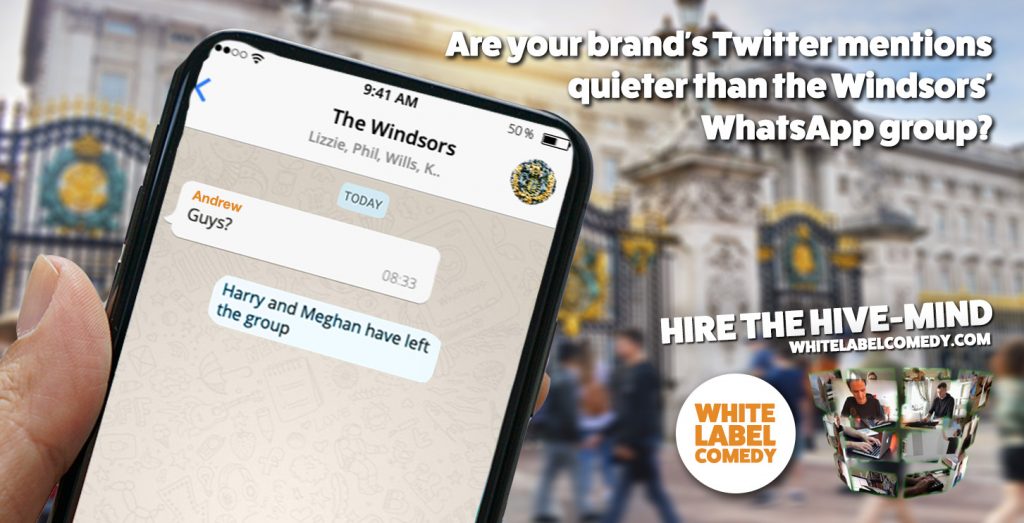
2. Video
Social media algorithms prioritise native video, which means that funny ideas in video form will likely reach a bigger audience than text or image-based posts ever could.
The savviest brands hire a hive mind of comedy writers to make sure their video content is genuinely funny and on-message, but if you’re going DIY, we recommend keeping the videos snappy, and alternating between factual information and light-touch gags — rather than trying to be hilarious from start to finish.
Dollar Shave Club is one the biggest digital marketing success stories of the last ten years. The viral success of this low budget video (which only took one day to produce) gave the brand massive exposure that they’ve continued to benefit from ever since — selling to Unilever in 2016 for a cool $1 billion. That’s the power of comedy video content.
3. Live video
Brands who’ve nailed funny branded videos can step it up a gear with live streamed video. Facebook and Instagram will notify your followers when you ‘go live’, which means an even bigger potential audience. Fans will forgive lower production values on account of the video being live, meaning you can convey your message more quickly and on a lower budget. That being said, if you want to make props and costumes, they’ll probably love that too.

4. TikTok videos
TikTok is that app that your teenage niece got famous on by posting funny dance videos. It’s not going to be a relevant platform for some brands, but if your ideal customers are there, you should be too. Check out Taco Bell’s recent advert for inspiration on how you could either use TikTok ‘normally’, or subvert the genre.
5. Paid Ads
Comedy content is a great way to reach new audiences without having to spend any money. But of course, comedy can also enhance the efficacy of your paid social media promotions and PPC advertising.
But there’s another hidden benefit to advertising on Instagram, Facebook and Twitter: A/B testing. Use these platforms’ advertising tools to show different types of branded comedy content to different users, and see what performs best. You’ll use this data to inform future paid advertising, but you can also apply it to your organic content.
6. Engagement with other brands
Try commenting on other funny brand’s posts in your own tone of voice. Ideally, their social media team will play along, and you can engage in some fun banter for the entertainment of both of your audiences. You may even manage to poach some of their followers!
Creating topical comedy content that directly takes aim at other brands is a riskier option, but one that can pay off if you manage to strike the right tone (and it helps if the brand in question isn’t a competitor). This example from LEGO satirised Elon Musk’s Cybertruck, which was embarrassingly not as ‘shatterproof’ as he claimed:
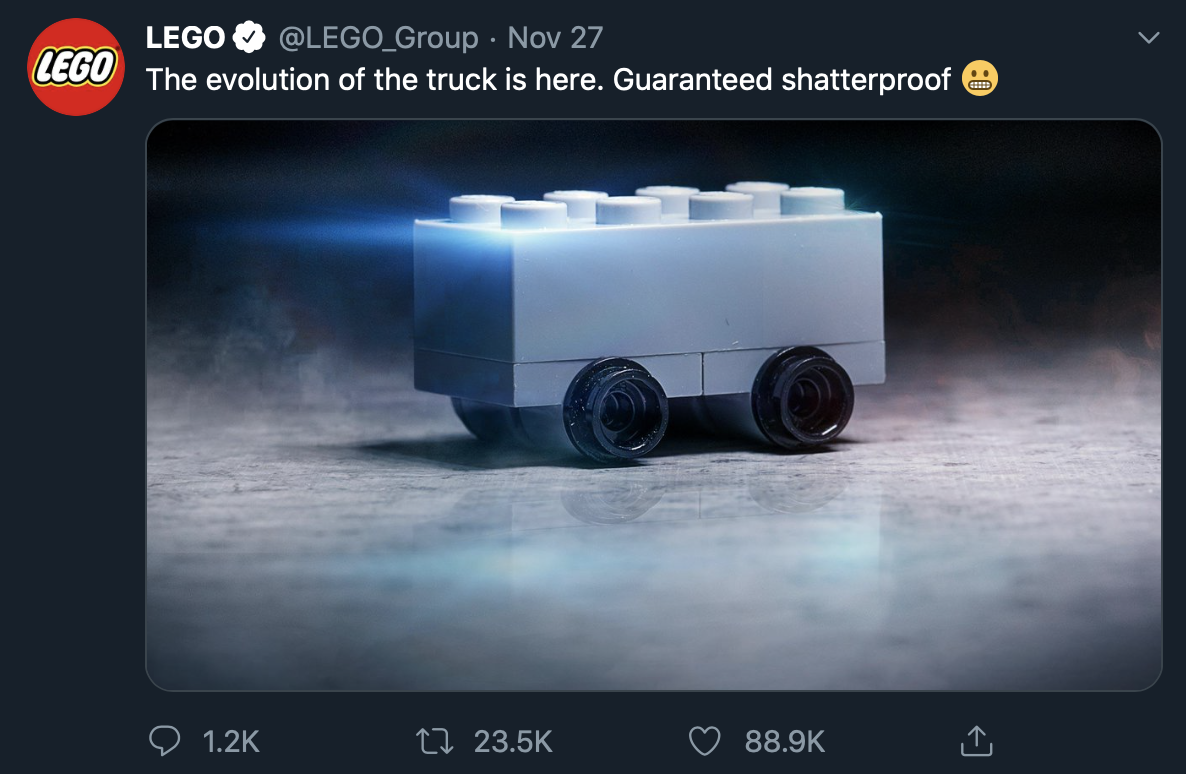
Look at those engagement stats! We also love this riskier example from McDonalds competitor, Wendy’s:
7. Edited Images and Infographics
We’ve already spoken about putting your Photoshop skills to work to create funny images that paint your brand as the hero. The comedy infographic is a popular sub-genre that can sit anywhere along the comedy content spectrum, depending on what you’re trying to achieve.
Some brands post flow charts and other seemingly informative diagrams that, upon closer inspection, are full of jokes and not much else — pure entertainment, that draws audiences to their profile. Others use the format to convey genuine information such as product features or statistics, with added gags to make otherwise dry information more palatable. Experiment to find out what works best for your brand.
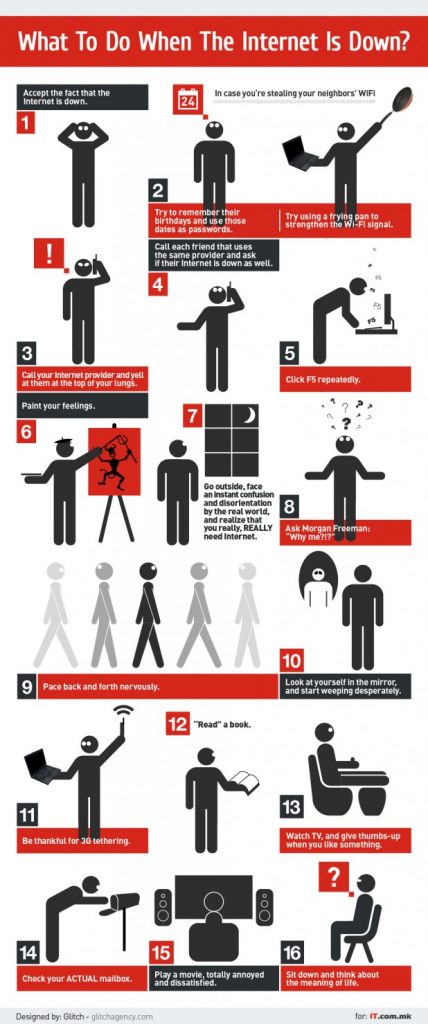
8. Contests and Free Stuff
Running competitions and giveaways is a great way to get followers to share your posts and expand your audience exponentially (remember to make Retweeting a condition of entry). This is also an opportunity to cultivate the kind of user generated content we mentioned earlier — either tell followers to post comments or photos in order to enter the contest, or encourage them to share photos with their free products and prizes.
9. ‘Mistakes’
Isn’t it annoying when Starbucks baristas spell your name wrong? How often do you see photos of Starbucks cups doing the rounds on social media for this exact reason? Every damn day. We’re pretty sure it’s no accident.
If you can come up with a harmless, amusing ‘mistake’ that you wouldn’t mind your brand ‘owning up to’ on social media, you’ve probably got the basis for a great gag. Audiences love self-deprecating humour. Now you just need to decide whether it’s best communicated via text, image, or video.
10. Job adverts
This is a niche one — but niche comedy content can help brands thrive in niche environments. Netflix’s usual mix of GIFs, memes and irreverent humour would look very out of place on LinkedIn. But the spoof job advert they created to promote The Witcher was perfectly tailored to the specific type of social media user who would see it on a professional networking site.

We’re not saying you should advertise for jobs that don’t exist. We’re saying you should think creatively, and adapt your social media marketing plan to the specific platforms and networks you’ll be targeting.
Want more ideas? Read more about the different forms of comedy content that can boost brand awareness. In the meantime, whether you’re ready to be funny or not, we’ve got a couple of bonus tips that you can try out…
Improve your Social Media and Increase Conversions, TODAY!
1. Don’t just market — remarket
Much to the annoyance of digital marketers, people don’t tend to buy things the first time they see an advert. We have to see something multiple times before we decide to engage, let alone part with cash. This is why people who are already aware of your brand are far more likely to respond to your adverts.
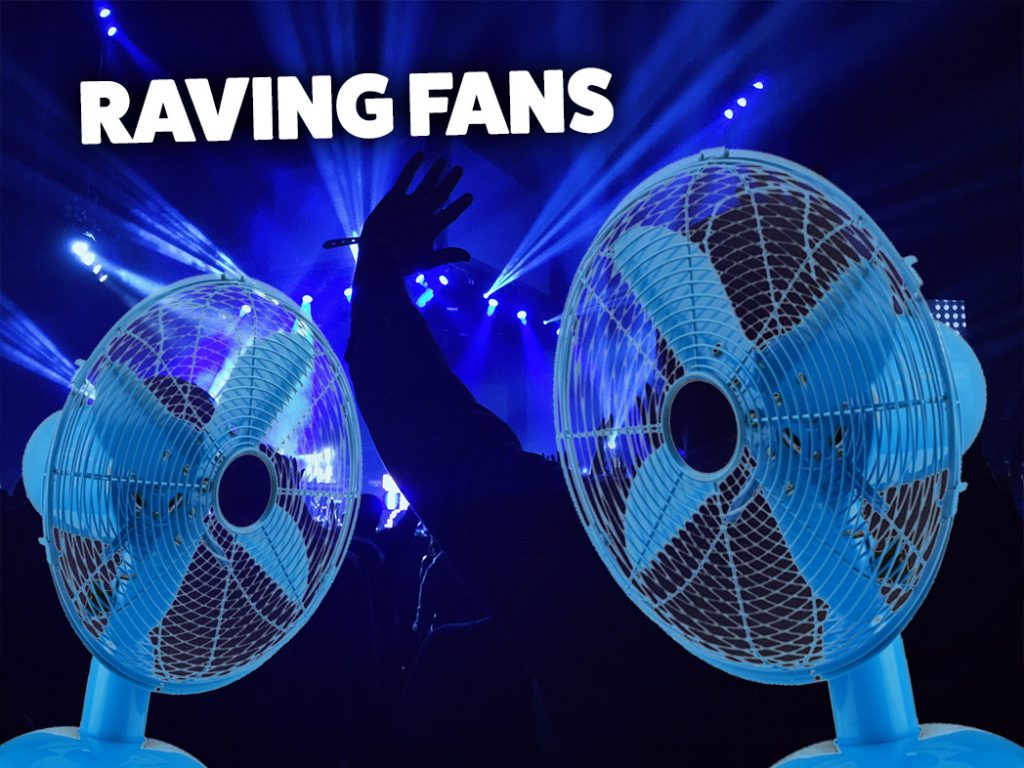
If you’re spending money on Facebook advertising, you should focus on getting those ads in front of people who have already visited your website or signed up to your email newsletter. You can do this using the ‘custom audiences’ feature in the campaign manager. These audiences are already primed and ready to respond to your Call to Action — by concentrating your efforts here, you’re very likely to see an increased conversion rate.
Remarketing is especially relevant to digital marketing in the hotel industry, where 75% of online bookings are abandoned before being completed! True, some would-be guests abandon their incomplete booking because they’ve decided to book with a competitor instead, but others simply get distracted. The best way to secure these lost conversions is to target website visitors with ads.
2. Post ‘Stories’
It’s increasingly difficult to make your traditional Facebook and Instagram posts stand out in your followers’ saturated social feeds — even if you’re producing great comedy content. But ‘stories’ occupy a relatively uncluttered corner of screen space, and many brands neglect to capitalise on this.
Supplement your permanent posts with regular updates to your story on both platforms, to keep your most committed fans engaged and fed with content. Playful ‘behind-the-scenes’ style content plays particularly well here — anyone viewing your story will have actively chosen to do so, which suggests they’re on the hunt for ‘bonus content’. The transient nature of the format means they’ll forgive your photos or videos for being a little rough-around-the-edges, too.
![]()
Instagram stories, in particular, are a great tool for increasing conversions. While you can’t post a working link on Instagram, brands can take advantage of the ‘swipe up’ feature in stories to send followers to a landing page. This is far, far more effective than posting a caption that urges followers to ‘clink the link in our bio’, and reflects one of the key principles of conversion optimisation…
3. Reduce the clicks
If you want followers to convert, you need to make it as easy as possible for them to do so! As a general rule, you should minimise the number of clicks (or swipe gestures) it takes for a potential customer to get from your social media post to completing a purchase. The more clicks required, the more likely you’ll lose them along the way. Life is short, and full of distracting memes, after all.
This means ensuring that your posts link to the most relevant page of your website. If you’ve advertised a specific product on social media, don’t send potential customers to your website homepage and expect them to hunt around for the product page. They won’t! Reward their attention by sending them directly to where they’re expecting to go, or risk losing their purchase (and maybe even their future willingness to respond to your CTAs).
Oh, and — for crying out loud — test your links! Nothing says ‘we don’t got this’ like a sponsored post with link to an error message…
4. Split-test your adverts
One of the best ways to increase conversions is by testing what does and doesn’t work. You can A/B test social media adverts on a range of criteria. Which Call to Action results in the most click-throughs? Does this image work better than that one?Perhaps your audience responds best to video content? As we’ve mentioned before, you can even A/B test your sense of humour!
If it sounds simple, that’s because it is. You need to find out what works, and do more of it — but you can’t do that confidently without running tests and diving into the data!
5. Make your content irresistible
By now, you’ll know that compelling content is the key to boosting your brand awareness on social media. You’ll also know that comedy is far and away the best way to make your content compelling. (Oh, you didn’t? Oops. You should probably grab a coffee then give this whole article another once-over…)
So how will this gloriously increased brand awareness impact your conversions?
Increased brand awareness means more people seeing your posts on their screens. If more people see your posts, that means more people see your CTAs, and ultimately, that means more people will respond positively to them. Even if the percentage of views to conversions doesn’t increase, you’ll score more overall conversions. It’s so simple, it probably doesn’t even count as basic maths.

But publishing quality content will help you improve on the ratio, too.
It’s all about ‘social proof’. When you consistently post content that audiences want to see, they’ll like your page. They’ll also share your posts, and they’ll even respond with their own user-generated content featuring your product or service. A large, responsive following sends a clear message to potential new customers. It tells them your brand is popular and trusted, and it primes them to be far more responsive when they see your funny advert or enticingly worded Call to Action.
And what’s the best way to cultivate that following in the first place? All together now (yes, even you at the back, nursing the coffee and the confused expression): COMEDY CONTENT!
If click-throughs and CTAs are your bag, take a look at our guide to increasing social media marketing conversion for more tips. Or perhaps you’re on the fence about this whole social media thing. In that case, read on to learn the answer to a question as old as time itself (well, as old as social media, anyway).
Is Social Media Marketing an Alternative to Email Marketing?
After all this talk about maximising your social media campaigns, it would be fair to assume that we’re advocates of social media marketing above all other digital marketing techniques.
This actually isn’t the case. In fact, if it’s lead generation and a demonstrable return on investment you’re after, you’d be better off concentrating your efforts on the comparatively old school art of email marketing.
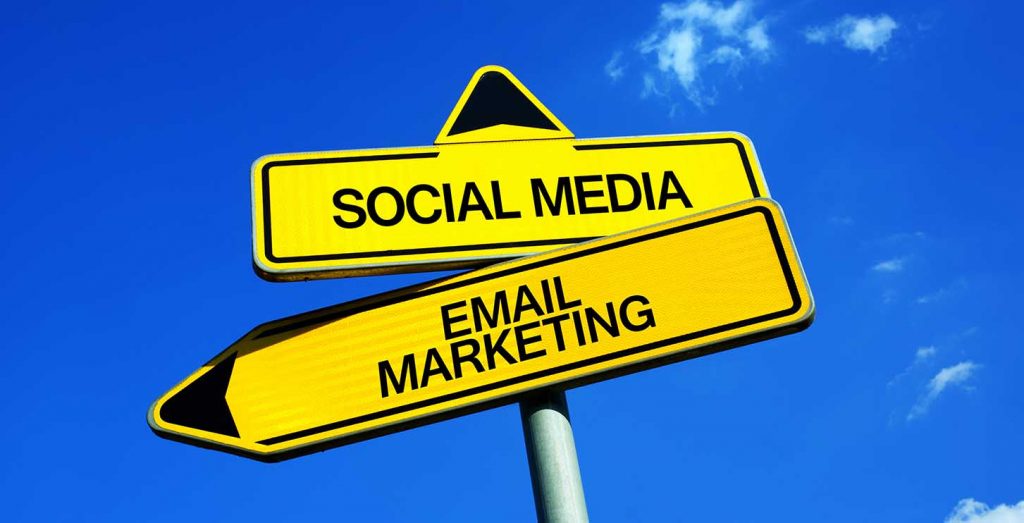
Well-written (funny) emails will help you target customers directly and drive sales in a way that social media can’t quite claim to do. Sure, your Instagram might be inspiring social media users to check out your e-commerce site, but that ROI is much harder to prove than it is for a given newsletter or email marketing campaign.
So should you forget about social media altogether? Hell no! A robust and effective digital marketing strategy incorporates social media and email.
After all, your carefully worded emails with tantalisingly witty subject lines aren’t going anywhere if you haven’t built up a mailing list. Social media will act as the top of a sales funnel that encourages users to sign up for your email newsletter. But of course, social media plays a much bigger role in your digital marketing strategy.
Your brand’s presence on Facebook, Instagram, Twitter, LinkedIn, Pinterest and beyond is the key to building brand awareness, recognition and loyalty. It’s here that you’ll cultivate your distinctive tone of voice, build a reputation for providing entertaining content that’s worth paying attention to, answer customer service enquiries and turn ‘followers’ into ‘fans’, and eventually into ‘customers’.
In short, being silly on social media is seriously important. Just don’t forget to send out some emails, too.
This article is constantly growing — so remember to check back for more social media marketing tips! In the meantime, why not learn from the best and check out our bitesize case studies of some of our favourite funny brands or our analysis of successes and failures from the world of automotive advertising?
